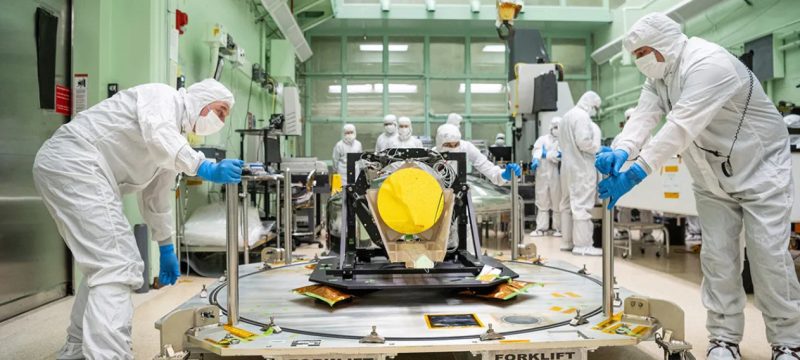NASA and the European Space Agency (ESA) have unveiled a full-scale prototype for the Laser Interferometer Space Antenna (LISA), a mission aimed at detecting gravitational waves in space. This groundbreaking effort involves six telescopes designed to measure gravitational waves—ripples in space-time caused by events like black hole mergers—using lasers.
LISA will consist of three spacecraft arranged in a triangular formation, separated by 2.5 million kilometers (1.6 million miles). The telescopes aboard these spacecraft will transmit and receive infrared laser beams to measure incredibly precise distances between them, down to picometers, or trillionths of a meter.
Also Read: NASA’s Perseverance rover captures a solar eclipse on Mars
The newly revealed prototype, called the Engineering Development Unit Telescope, was inspected at NASA’s Goddard Space Flight Center in May and is a key step toward developing the mission’s flight hardware. Made of Zerodur, an amber-colored glass-ceramic known for its stability in extreme conditions, the prototype’s primary mirror is coated in gold to optimize laser reflection and reduce heat loss in the cold vacuum of space. The mission is set to launch in the mid-2030s, with the potential to unlock new discoveries in astrophysics by detecting events such as black hole mergers, neutron stars colliding, and more.









